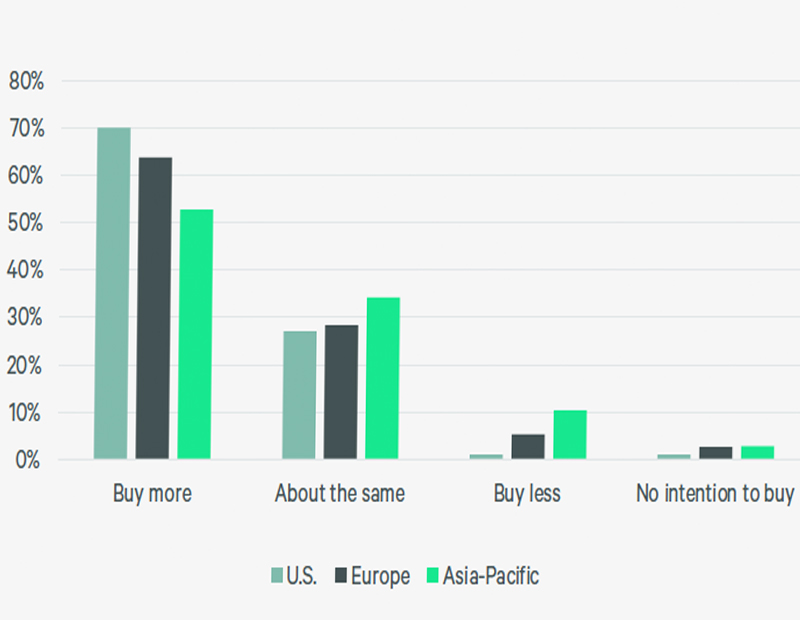How Office REITs Are Signaling Better Days Ahead
These companies are on pace for more than $10 billion in acquisitions, according to Sheheryar Hafeez of JLL.
While there remains significant uncertainty in the overall office market, activity is trending in a positive direction. Many major corporations are planning for large-scale office re-entry in early 2022. Vaccination rates for the office-using population is approaching 80 percent. the Delta variant is subsiding across the U.S., and the overall economic health of the country is inching towards pre-COVID levels.

Lower-cost Sun Belt markets are approaching pre-pandemic activity in both economic and office fundamentals faster than their gateway peers. Leasing volumes in these geographies are only 10.1 percent below 2019 levels, while gateway markets remain 47.4 percent lower than the same time period. In addition, office lease terms continue to average between 90 and 110 months on a weekly basis, a marked improvement from spring, and largely in line with pre-pandemic levels.
A nuanced aspect of recovery is that the top-performing submarkets of micro-markets, within both gateway and secondary markets, have recovered faster than the overall office market as evidenced by investment volume that have returned to 2019 levels in the past 12 months. Innovation clusters’ share of office investment in gateway markets has increased by nearly 30 percent as investors target quality assets with desirably tenancy in growth sub-markets.
There remains, however, volatility in the market and the office sector is not out of the woods yet. Though improving, the physical occupancy of office buildings is around 37 percent of the workforce. Many corporations are shifting office re-entry into late fourth quarter 2021 and first quarter 2022, and sublease space is still high from a historical perspective, particularly in gateway markets.
Outperforming strong expectations and driven both by strategic and private capital, 2021 has been a record year for REIT M&A, which hit $108 billion in transaction volume at the end of September. Office represented more than 15 percent of that volume, a notable improvement over the 4 percent average since 2012.
Buoyed for the first time since 2016, office REITs are on pace for more than $10 billion in acquisitions activity, driven in part by several office REITs executing strategic reviews, portfolio repositioning efforts, and expansion strategies from such firms as Cousins Properties, Highwoods Property and Douglas Emmett.
Here are some significant transactions:
- A joint venture between AEW Capital Management and Montecito Medical Real Estate closed a $245 recapitalization of a 31-property medical office building portfolio, consisting of 27 single-tenant and four multi-tenant buildings with overall occupancy near 100 percent, and an average remaining lease term of 10 years, across 10 states. JLL advised Montecito on the transaction.
- Columbia Property Trust Inc. announced a $3.9 billion take-private with PIMCO at +27 percent premium to unaffected share price. It was the first office take-private since Parkway Properties in 2017.
- Boston Properties, Inc. announced a $2 billion acquisition joint venture with CPPIB and GIC targeting Class A office assets in gateway markets such as New York, San Francisco, Boston and Los Angeles.
- Kilroy Realty Corp. announced the $580 million acquisition of Indeed Tower in Austin, expanding the company’s portfolio outside the West Coast for the first time.
- Preferred Apartment Communities Inc. announced a $769 million portfolio sale of most of its office assets to HIW, building a multi-year business simplification strategy.
- Washington REIT’s sale of almost its entire office portfolio for $766 million
This surge in volume increases the share of total REIT transaction volume for the office sector for the first time since 2015. Furthermore, the sector has recovered to trade at pre-COVID-19 net asset value discounts, which occurs when the market price of the exchange-traded REIT is below the analyst estimates of the equity value of REITs’ real estate holdings. The narrowing of the gap in market price and NAV is a positive development for the office sector.
Inflation concerns are not anticipated to negatively affect REIT performance. In fact, inflation may drive positive performance. Though the impact of inflationary factors is being watched, REITs are expected to continue to generate strong performance. Most of the REITs beat their consensus estimates YTD 2021 and REITs continue to be able to tap the capital markets for growth, having raised over $70 billion in equity and unsecured debt capital in 2021 thus far.
Going forward, we expect a strong bifurcation in performance. Newly-delivered assets will continue to generate elevated appetite amid flight to quality as evidenced by strong absorption of 39 million square over the last six quarters for office assets that were delivered between 2015 and 2021 YTD.
Sheheryar Hafeez is a managing director with JLL Capital Markets.







You must be logged in to post a comment.